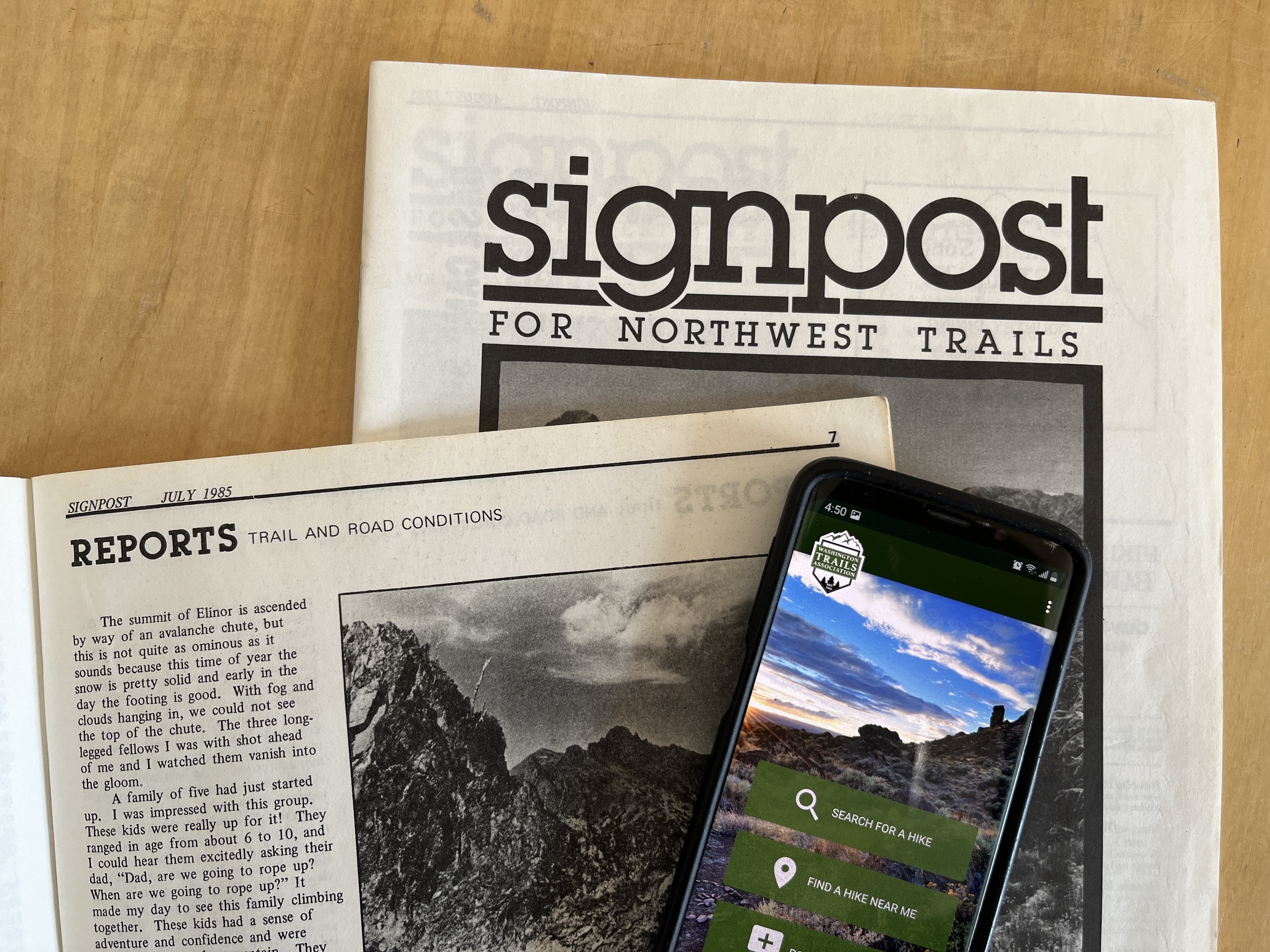Using technology to help people connect with and protect wild places since 1966
How WTA continues to embrace technologies old and new in order to meet the needs of the day.
When you think of a tool to help trails, probably something like a Pulaski, the finely honed crosscut saw or even the simple shovel comes to mind. At WTA, we’ve got plenty of use for our shovels, but we also consider the computers and phones in your pockets essential tools of our work.
As a rule, hikers have always sought ways to unplug. But WTA’s origin story is also rooted in connection. In 1966, hikers needed information and a way to speak up for public lands. Signpost magazine and WTA was born.

A place to connect: to people, nature, stewardship
Almost 60 years later, we continue to embrace technologies old and new in order to meet the needs of the day. We’ve grown steadily over the years, expanding our programs to fill the gaps facing our community and public lands: from our largest-in-the-nation trail maintenance program to founding one of the first gear libraries and outdoor leadership programs in the country.
As a nonprofit organization, everything we do — including how we leverage technology — is in service of our mission to help hikers and the lands we love. Our website, social media channels, our mobile app, our newsletters — we’ve created and curated them to reduce barriers for all hikers who want to explore trails and to ethically share information in a way that better stewards those places in a way that makes them available to everyone.
Helping more hikers plan around snow, fires
In recent years, we’ve developed Hike Finder Map layers to help hikers plan around more dramatic climate swings and factors like snow-depth, air quality during smoke season and active wildfires. We’ve worked to improve our digital accessibility, better serve wheelchair hikers and make signing up for a day of trail work easier.
And we’ve done all of it hand-in-hand with the people who make up our community.
A passion to give back
Washington Trails Association has a long tradition of innovating with the input and work of passionate volunteers, staff and paid developers working together because they believe in what we do. Our volunteers are members and trip reporters. Our software developers are hikers and runners. Members, and even our corporate supporters, understand, on a cellular level, the value of spending time in nature.
Decades before trail information became a multi-million dollar industry, WTA volunteer and Microsoft employee Bill Sunderland volunteered his time to help launch wta.org and bring local trail information and trip reports online in 1995.
Our Trailblazer mobile app was created by volunteers and continues to be maintained, in part, by a small corps of volunteers.
“We know that folks in the tech industry love the outdoors, and many of them love to get on trails,” says WTA board member Ken Myer and a trustee for the nonprofit ALLtech Benefits Trust. An employee benefits platform, ALLtech offers health insurance and other benefits specifically to Washington state’s startup tech industry. ALLtech is also a leader in supporting trails, partnering with WTA for the past four years by dedicating more than $20,000 to help people get outside.
“We hope that ALLtech’s involvement will encourage more organizations to partner with and support WTA,” Ken said. “They will see tremendous benefits for their teams and they will be supporting the most important organization in our state for an accessible and diverse trail system.”
WTA’s metaphorical toolshed is chock full of shovels and cutting edge technologies. We rely on all kinds of tools to help hikers and protect trails. But at the end of the day, the people supporting and using those tools matter far more. Whether we’re behind a screen, digging in the dirt or just soaking in the pleasures of a day on trail, we’re just humans hoping to unplug and connect with wild places.


Comments